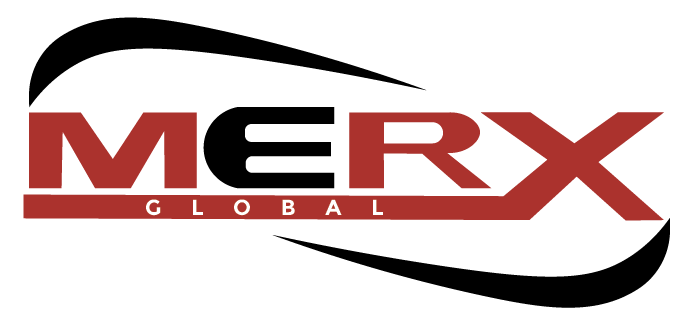A letter sent yesterday to Jamieson Greer, Ambassador for the Office of the United States Trade Representative (USTR) by more than 300 industry associations, representing various sectors, including, transportation and logistics providers, manufacturers, importers, exporters, and retailers, among others, called on the USTR to not move forward with its proposals, regarding the Section 301 investigation focused on China’s Targeting of the Maritime, Logistics, and Shipbuilding sectors for Dominance.
As previously reported, the USTR issued an announcement on February 21, regarding a proposal that would charge Chinese-owned ships up to $1 million per entrance and Chinese-built vessels charged $1.5 million per entrance.
The impetus for these fees, according to a Federal Register notice, is “China’s targeting of the maritime, logistics, and shipbuilders’ sectors for dominance is unreasonable because it displaces foreign firms, deprives market-oriented businesses and their workers or commercial opportunities, and lessens competition, and creates dependencies on China, increasing risk and reducing supply chain resilience.” And the USTR added that China’s global shipbuilding market share increased from less than 5% in 1999 to more than 50% in 2023, while also increasing China’s ownership of the commercial world fleet to more than 195 as of January 2024, and controlling production of 95% of shipping containers and 86% of the global supply of intermodal chassis, among other components and products.
USTR also stated that China’s targeting of the shipbuilding sector for dominance is hindering any public or private efforts to revitalize the U.S. shipbuilding industry, adding that U.S. companies are severely constrained to compete for business in the global recapitalization of the commercial fleet and also that low-priced Chinese ships, which result from China’s targeted dominance, are among the constraints U.S. companies face to compete for business.
The letter was written on March 24, the first day of public hearings on this topic, with the second day of hearings slated for March 26.
The organizations explained that while they “do support scrutiny of China’s efforts to dominate the maritime industry,” that “USTR’s proposed actions will not deter China’s broader maritime ambitions and will instead directly hurt American businesses and consumers.” In terms of the impact they pointed to how the USTR’s proposed fees would increase shipping costs, both containerized and non-containerized, by at least 25%, $600-to-$800 or higher), while adding around $30 billion in annual costs on U.S. businesses and farmers. To that end, it noted that would result in higher costs for U.S. consumers, as well as undermine the competitiveness of many U.S. exports, which would result in export revenue declines and raise the U.S. trade deficit.
And as noted in yesterday’s hearing, the letter observed that if the proposed fees take effect, ocean carriers would reduce service to many U.S. ports, and also divert cargo to ports in Mexico and Canada.
“This will reduce ocean traffic at many smaller ports, creating profound economic damage—including lost jobs—in communities where ports serve as vital economic hubs,” the letter noted. “Reduction in service will increase congestion across the country’s logistics network and spur a new normal of higher costs and delays affecting both imports and exports. American consumers will suffer a lag in receiving the goods they rely on each day.”
Addressing the USTR’s proposed export requirements to support a domestic U.S. shipbuilding industry, the letter said that USTR’s export requirements “fail to acknowledge the realities of revitalizing a U.S. shipbuilding industry,” adding that “the U.S. cannot build a vibrant shipbuilding capacity from its current capacity in seven years.” The letter went on to say that the USTR proposal would lead to a reduction in U.S. exports, due to a lack of existing capacity, which would also not be realized, or exist, under current USTR timelines.
In order for the U.S. to both combat trade deficits and spur growth towards reinvigorating the U.S. shipbuilding industry, the letter called for a dedicated strategy comprised of sustained investments, leadership, and a long-term public and private sector commitment.
Daniel Hackett, partner at maritime consultancy Hackett Associates, told LM that the potential fees on the operators of vessels of Chinese origin and/or on Chinese operators are going to create additional costs that impact multiple parts of the supply chain in various ways, including
- These fees will likely be passed onto the shippers, who will in turn pass them on to the manufacturers and consumers, representing yet another inflationary threat.
- This may drive carriers to speed up the introduction of larger vessels on the transpacific as they seek economies of scale. The use of larger vessels is also associated with fewer port calls, and some ports may see a reduction in the number of calls they receive. This will hurt terminal operators and local economies, but also impacts importers (who will have to adjust supply chains) and exporters (who may see increased costs, especially agricultural-related exporters with more time-sensitive cargo);
- Strings that serve East Coast ports typically call at more U.S. ports than those that serve the West Coast. Given that the potential fees are per port, this might result in limited call consolidation on the East Coast; and
- Carrier alliances with mixed vessels on a string mean that shippers may have limited insight into whether their cargo will be shipped on a vessel of Chinese origin, adding confusion to their operational planning.
“The fundamental issue with this approach is that it takes many years for vessel construction, and ultimately these costs would be levied for many years to come even if carriers sought to adjust the composition of their fleet,” said Hackett. “Some carriers, obviously, will not, and are thus would be looking at an additional cost that is passed on to shippers. Moreover, there is a lack of capability within the U.S. to build large container vessels.”

